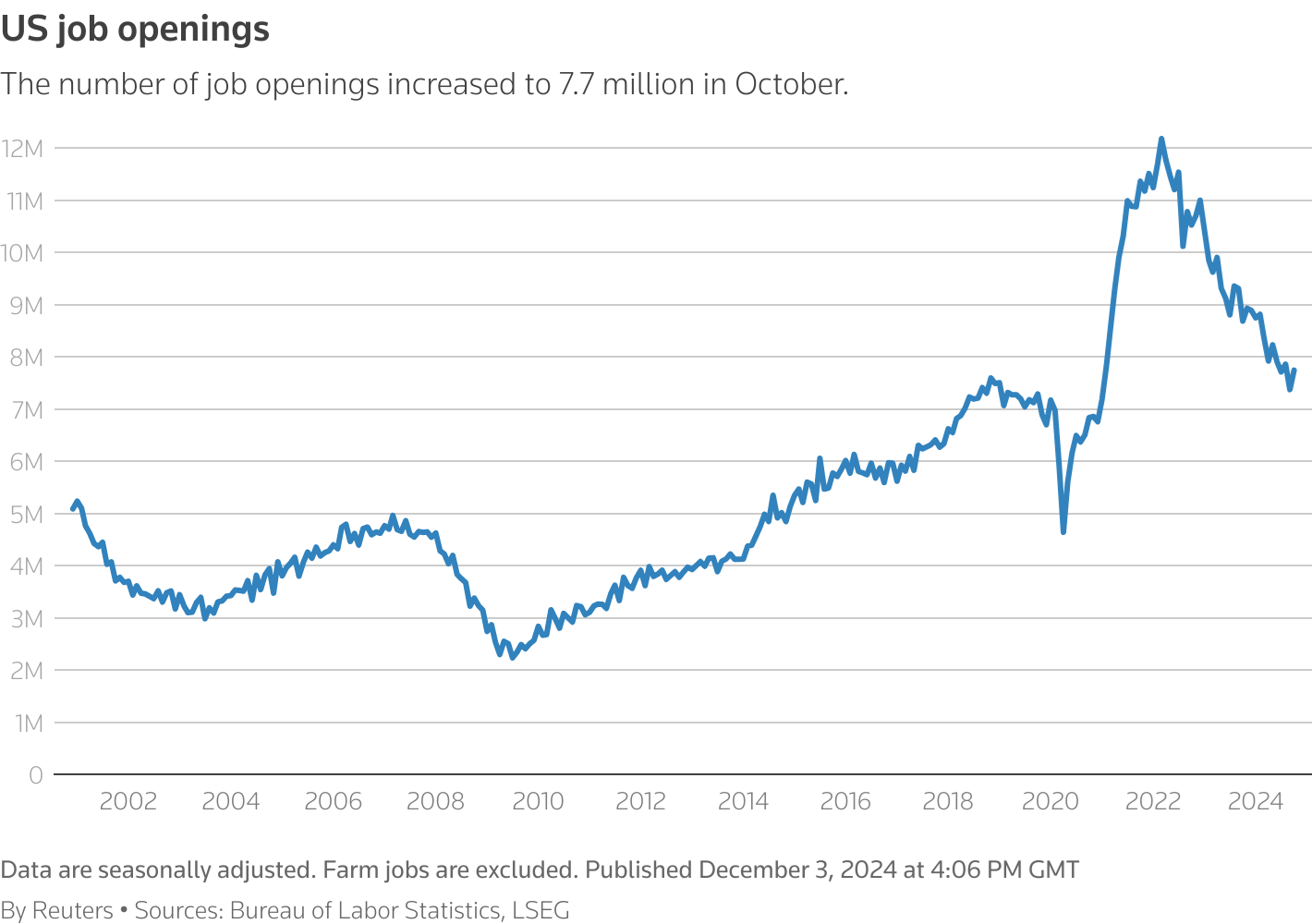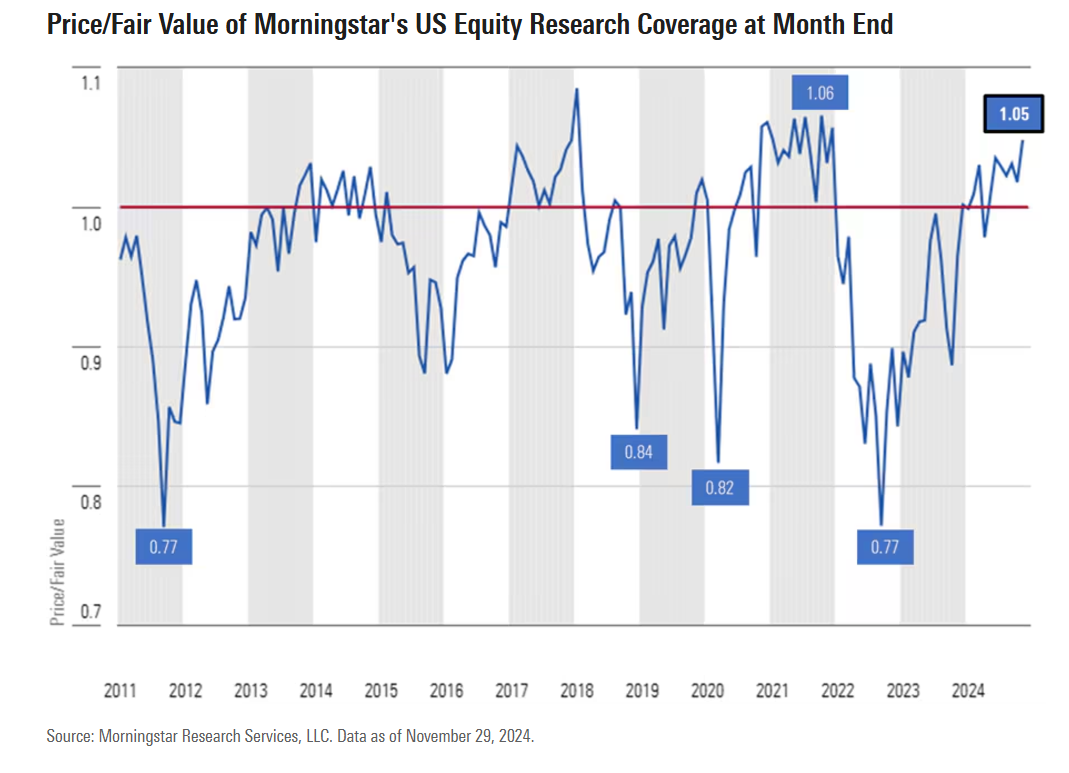US job openings rose in October, rebounding from September, when new openings fell to a three-year low. Although the current reading is well below the April 2022 peak following the economy’s recovery from the pandemic, the October level is still above the pre-pandemic high point. “The report points to ongoing resilience and doesn’t flag major concerns about the economy,” says Oren Klachkin, financial market economist at Nationwide. “With policy still restrictive in its view, the Fed can probably push through with another rate cut before considering a pause next year.”
South Korea’s president faces impeachment after he briefly imposed martial law over the country. The National Assembly’s Secretary General Kim Min-ki said in a briefing that nearly 300 martial law troops stormed the parliament, flying in military helicopters or climbing over fences.
China’s services economy continued to expand in November, but the modest growth rate edged down, according to survey data. “The Caixin China General Services Business Activity Index came in at 51.5 in November, down 0.5 points from the previous month, staying in positive territory as the sector has continued to expand since the beginning of last year,” says Wang Zhe, Senior Economist at Caixin Insight Group.
China’s share of global electric-vehicle sales rose to 76% in October, highlighting the country’s dominance in this facet of the auto industry. Between January and October, sales of EVs reached 14.1 million units, according to the China Passenger Car Association, with 69% of those sales in China.
US online retail spending surged on Cyber Monday, setting a new record high. US online shoppers spent a record $13.3 billion on Cyber Monday, up 7.3% YoY, per Adobe Analytics.
The global economy is expected to remain resilient in 2025, the OECD forecasts. The Paris-based research body projects the world economy will grow 3.3% next year, slightly faster than the 3.2% rate of expansion it estimates for 2024.
The US stock market is trading at a 5% premium to its fair-value, according to Morningstar. “That premium may not sound like much, but since 2010, the market has traded at this premium or less than 10% of the time,” writes David Sekera, Morningstar’s US market strategist. “We think further upside over the short term is limited until earnings catch up to valuations over the next few quarters. In our view, it appears that stocks are priced to perfection, and valuations do not have any room to allow for any margin of error or unexpected negative catalysts.”

